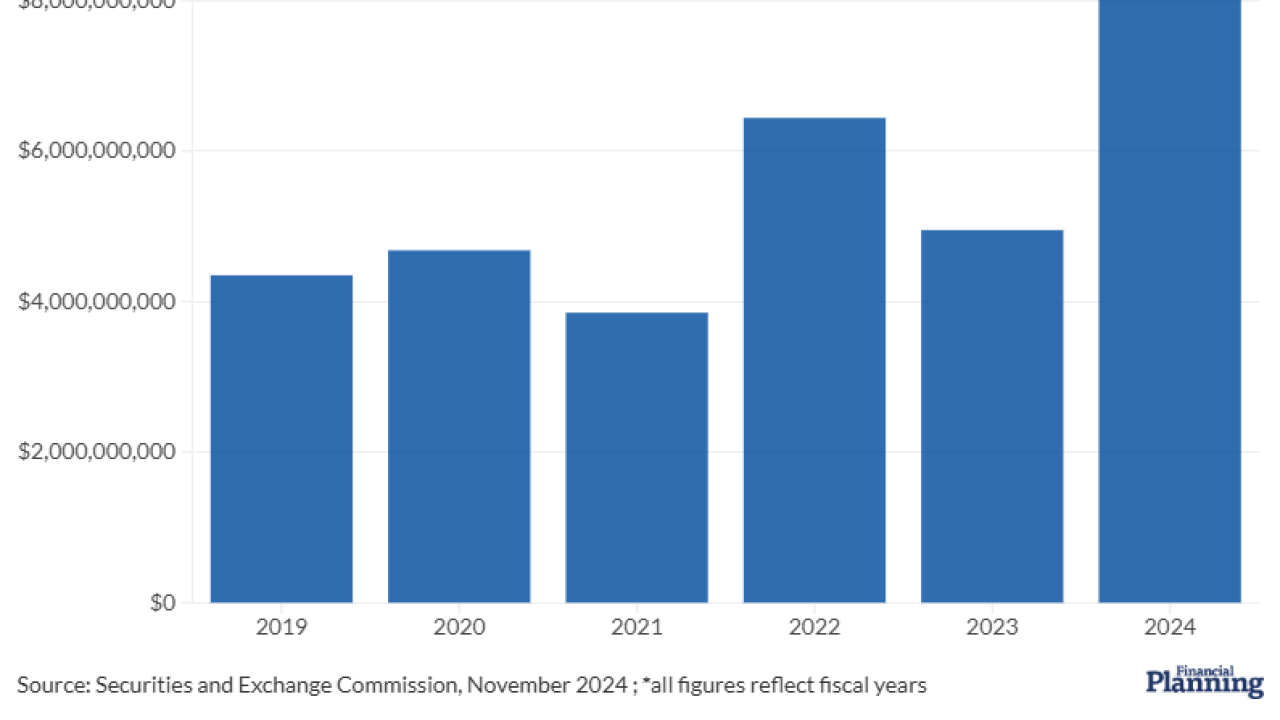Exchange-traded funds that made bets on the gold sector were punished in the first half of the year with poor returns and redemptions amid a two-year low in price for the precious metal. Other funds that make their living betting on the Japanese market continued their torrent pace enjoying big returns and even bigger inflows.
Golden Goose Eggs
For example, the SPDR Gold Shares ETF (GLD) shed 28.5% and some $18 billion year-to-date through June 30, according to Morningstar. The iShares Gold Trust (IAU) is also down 28% and redeemed $1.7 billion this year through June 30.
Gold prices rose 1% to $1,246.90 an ounce on July 9. However, the precious metal is still down more than 33% from the all-time highs near $1,900 in September 2011.
"The biggest news in the first six months was the huge selloff in gold and then you had gold mining companies down 50% on top of that," said Michael Rawson, an analyst at Morningstar.
In the first four months of 2013, investors pulled $14.8 billion out of gold-based exchange-traded products, with more than half that amount occurring in April alone, according to Todd Rosenbluth, senior director of ETF research for S&P Capital IQ.
"Most of the outflows were from GLD, the largest and oldest of the products that still has over $37 billion in assets. However, investors also pulled out of other smaller ETFs from iShares and PowerShares," he wrote, in a recent research report.
Rosenbluth added that analyst consensus estimates gathered by Capital IQ suggest gold is going to move higher in the coming months.
Russ Koesterich, global chief investment strategist for BlackRock's iShares ETF business, said the firm expects gold prices to remain volatile, and a general downward bias in the price to persist. "Sentiment has clearly changed in the gold market and we would now advocate reducing holdings in this asset class," he said.
The World Gold Council, which touts itself as a market development organization for the gold industry, noted that retail investors stepped up their demand for bars and coins throughout Q1 as the gold price corrected back from higher fourth quarter levels.
However, "some institutional investors have a very different rationale for holding gold, adopting a shorter-term, more speculative approach. Among this group, a proportion of more opportunistic and 'event-driven' investors reacted to the Q1 price drop by selling their ETF holdings," according to the WGC.
To be sure, gold-based ETFs were not the only ones suffering in the first half. Emerging markets-focused ETFs such as the iShares MSCI Emerging Markets (EEM) ETF returned -10% and shed some $8 billion through June 30, according to Morningstar.
"In the short term, we would not be surprised to see additional performance challenges for emerging markets," according to Koesterich. "Slowing growth, concerns over the Chinese banking system and a general preference among investors for US stocks have been hurting performance and these trends are not going away any time soon."
Investors also redeemed $4.3 billion from the iShares iBoxx $ Invest Grade Corp Bond (LQD), which was down 4.9% through June. "iShares really got decimated in June with very strong outflows," said Rawson. "Since [LQD] is investment grade, you wouldn't expect a sharp selloff there but a lot of advisors and small asset managers used LQD to provide them with some liquidity. I think people looked to it as a liquid way to trade the market when the bond market was relatively illiquid."
Land of the Rising ETFs
On the other end of the spectrum, Japan proved to be a gold mine for ETFs such as the WisdomTree Japan Hedged Equity (DXJ) ETF and the iShares MSCI Japan Index (EWJ) ETF, which returned 25.7% and 16%, respectively. The WisdomTree ETF has gathered $8 billion through June 30 and iShares' Japan fund netted $5 billion in assets.
"WisdomTree Japan ETF has been incredibly successful," said Rawson. "That ETF benefitted from two phenomena: the rise in the Japanese stock market and the fall in value of the yen. But because the ETF hedges its currency exposure, it's selling the yen while being long in Japanese stocks. This thing saw massive inflows and went from less than $1 billion in assets [in January] to almost $10 billion in six months."
Jeremy Schwartz, director of research at WisdomTree, noted that: "2013, in many ways, has been the year of Japan."
In his latest commentary, Schwartz wrote that interest in Japanese stocks has soared with a rising equity market and weakening currency based on optimism about Prime Minister Shinzo Abe and his "Abenomics" policies to reinvigorate Japan.
"Abenomics focuses on a "three-arrow" policy of fiscal stimulus, monetary stimulus and structural reforms. All of Abenomics' goals are aimed at one thing: promoting economic growth in Japan," according to Schwartz.
"We believe that Abenomics will not fade quickly-on both the monetary and fiscal side, commitments have been made with a focus on long-term results and a willingness to stay the course."
In fact, WisdomTree is so bullish on the region that it launched another Japan fund, dubbed the Japan Hedged SmallCap Equity Fund (DXJS), which will bet on small capitalization stocks while hedging exposure to the yen, on June 28.
"To expand our coverage of Japanese stocks beyond just the exporters, we have designed DXJS to capture the small cap portion of the equity markets that we believe are more levered to local Japan consumption and revenue," said Schwartz.
Other ETF funds that were in the black in the first half include the Financial Select Sector SPDR (XLF), which gained $3.4 billion in assets through June, and the iShares Core S&P 500 ETF (IVV), which gathered $3.3 billion.





